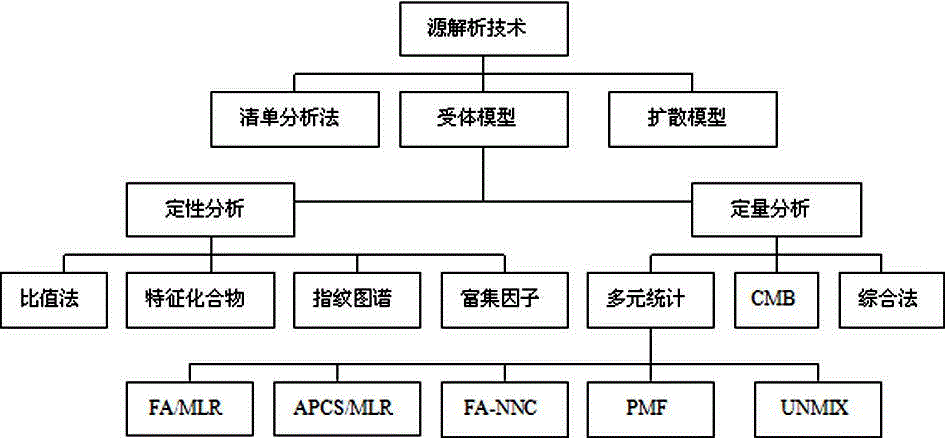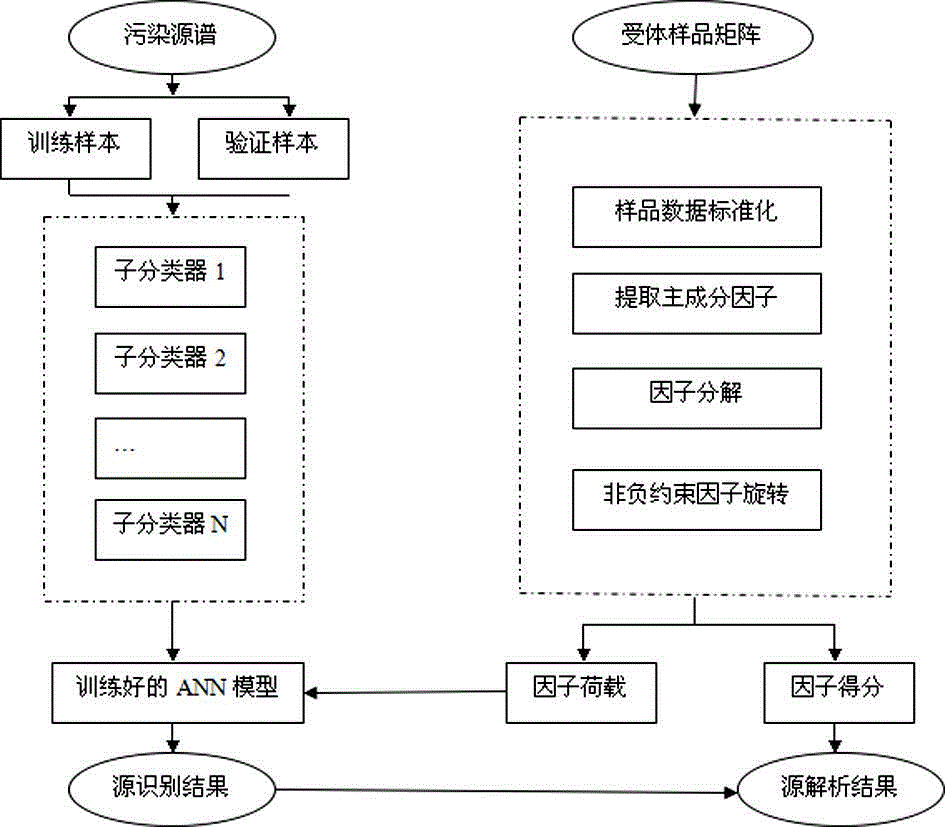Source apportionment method for polycyclic aromatic hydrocarbon pollution in soil
A polycyclic aromatic hydrocarbon and pollution source technology, applied in the field of pollution source analysis, can solve problems such as affecting the analysis of pollution sources, complex analysis process, inconsistency, etc.
- Summary
- Abstract
- Description
- Claims
- Application Information
AI Technical Summary
Problems solved by technology
Method used
Image
Examples
Embodiment
[0146] The first step is data preprocessing;
[0147] The second step is to determine the number of principal component factors;
[0148] The third step is factorization;
[0149] The fourth step, non-negative constraint factor rotation;
[0150] 10 sampling points were arranged in different areas of Yongqing County, Langfang City, and the surface layer (0-20cm) soil mixed samples within the range of 100m×100m were collected by the grid point method. After mixing evenly, 1kg was taken by quartering method and air-dried indoors. Afterwards, part of the soil samples were taken and ground by the quartering method, and passed through a 100-mesh sieve. After the samples were prepared, they were stored at -18°C for testing. Yongqing County, Langfang City contains five towns, namely: Yongqing Town, Hancun Town, Houyi Town, Bieguzhuang Town and Lilan Town. The results of blank analysis were all less than the detection limit; the precision and accuracy of blank standard addition wer...
PUM
 Login to View More
Login to View More Abstract
Description
Claims
Application Information
 Login to View More
Login to View More - R&D
- Intellectual Property
- Life Sciences
- Materials
- Tech Scout
- Unparalleled Data Quality
- Higher Quality Content
- 60% Fewer Hallucinations
Browse by: Latest US Patents, China's latest patents, Technical Efficacy Thesaurus, Application Domain, Technology Topic, Popular Technical Reports.
© 2025 PatSnap. All rights reserved.Legal|Privacy policy|Modern Slavery Act Transparency Statement|Sitemap|About US| Contact US: help@patsnap.com



